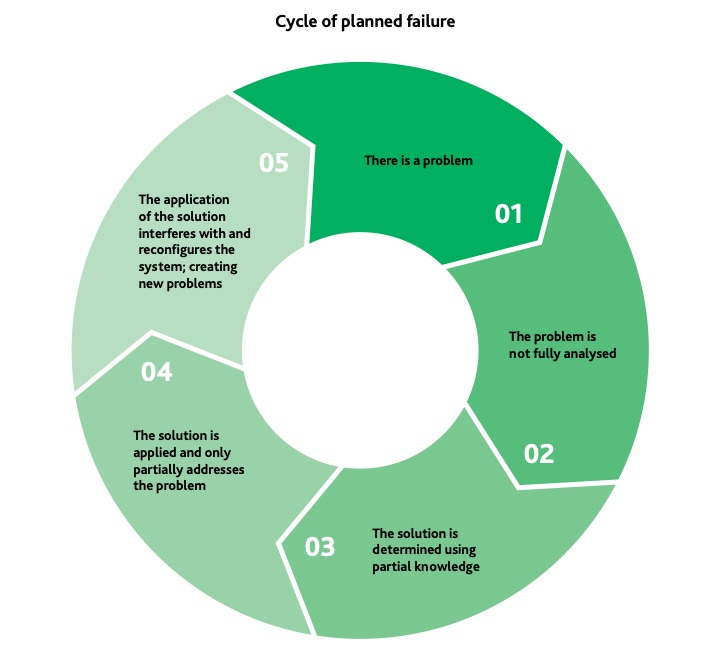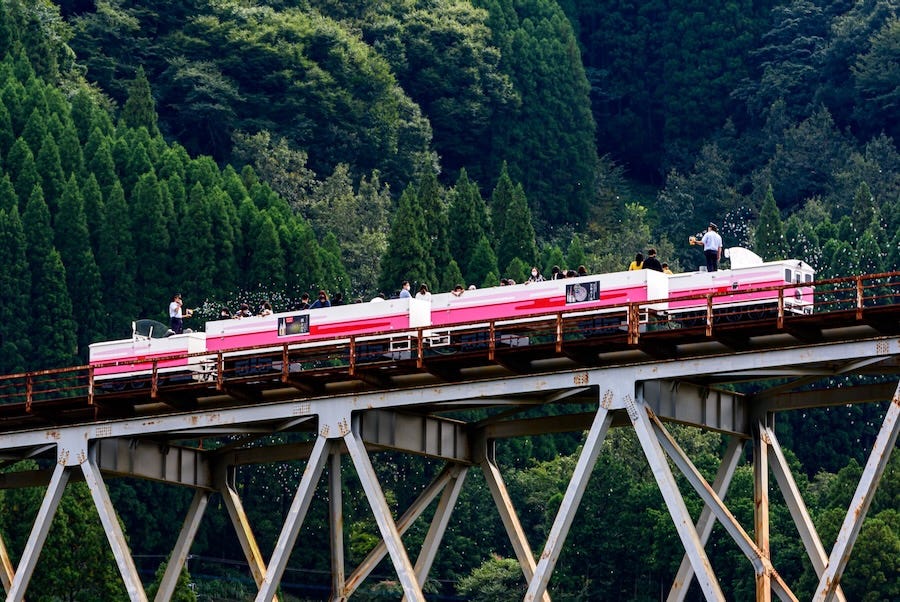Cop out, the Liam, running on ramen, the romance of sail
A collection of climate stories, mostly
COP 27, the COPS before, are a cop out
Brands behaving badly
Courtesy of a Cambridge Approach to Improving Education
Full disclosure. Before February 2018 when my working week finally ended, I’m not sure I’d heard of a COP. Perhaps Paris in 2015, but only because of the red line agreement to limit global warming to 1.5 degrees centigrade. It’s been mentioned a lot since, mostly because the world is set to overshoot the relative safety of that target quite comfortably.
COPS are annual summits organised by the United Nations, allowing world leaders to meet for twelve days of talks. It’s also become the biggest trade show in the world, full of lobbyists with vested interests, most of which distract from the difficult decisions that fail to be addressed.
Henrik Norborg, recently wrote an excellent article about COP being the perfect example of a planned failure. You can read it in full here.
He argues that projects often fail by design. The project team continue to stick to the plan long after it’s become obvious that it’s not going to work.
It happens a lot. My own company was guilty when we expanded into Japan and China. It was clear long before we pulled out that we needed to stop chasing far flung sales leads and focus on near at hand markets like Europe, which were easier to sell to.
COP is based on three assumptions which have been proven wrong.
Climate change can be fixed by technology.
There is no conflict between the size of the economy and climate protection.
Countries are willing to collaborate.
The G20 group of nations want to half CO2 emissions inside 10 years, whilst maintaining 2% global growth. That’s impossible and here’s why.
Ships, cars and aeroplanes, nearly all burning fossil fuels have a life expectancy of 20 years, power plants generating electricity, even longer. Most of the infrastructure working today, will continue to be working in 2030.
Meanwhile, in a world still dominated by fossil fuel, the only way to accommodate the massive expansion of renewable energy sources needed - photovoltaics and wind turbines, is to burn even more carbon-based fuel in the short term.
If the world wants to reduce carbon emissions now, the developed world, (G20), needs to reduce consumption.
How is that possible?
The agreed economic agenda is to continue growing. The only people reducing their consumption in the UK, not through choice are the poor, who can no longer afford to heat their homes.
Thirty years ago before the start of COP, the US was the only global superpower. The Soviet Union had recently collapsed and China’s emissions were not significant. The US joined COP on one condition - the American way of life was not up for negotiation.
The reality is, preventing climate change has never been about making tough choices for the rich, industrialised west.
Specifically, COP isn’t working because of the following problems.
Voluntary commitments to reduce fossil fuel consumption is pointless. Think of Germany’s energy vacuum, now perservering or reinstating coal-fired power plants because Russian gas has vanished.
Reduction targets don’t work for the same reason, far better to regulate the price instead.
Reduced fossil fuel consumption will lead to lower world prices benefiting countries which are still reliant on carbon.
The cost of decarbonisation must be distributed fairly and evenly.
A global carbon compensation fund resolves these issues and makes the oil lobby redundant overnight.
Fossil fuel producers are forced to pay a fee proportional to their production into a global fund. The same fund is distributed to the world’s nations on a per capita basis
It removes loopholes for every operator because of the adoption of a global tax. The amount paid to poorer countries becomes directly proportional to the consumption of the rich. A far better incentive for not opening a new coal mine in Cumbria. It’ll cost yer.
The Liam F1 wind turbine
Green discovery
Designed by a Dutch company called The Archimedes, it’s a 1.5 metre wide wind turbine for everyone’s house with a roof, designed to produce more energy than a traditional wind turbine and to do it quietly. It doesn’t generate any noise and looks more beautiful than one of those satellite dishes currently sitting on at least 12 million UK homes. It’s more useful too.
On average it generates 1,500 kilowatt-hours (kWh) of energy per year with a windspeed of 5 metres/second. The average Dutch house uses 3,300 kWh of electricity a year, so the new archimedes design will comfortably provide half of a homes total electricity requirement.
That screw automatically moves Liam to the optimum position for the wind maintaining peak performance. It’s designed with urban environments in mind where wind turbulence is common and it comes in a variety of colours so it blends in. It can also be combined with solar panels providing a virtually constant output.
It’s been around since 2016 and its sales brochure suggests that everything is based in South Korea. I found an expected sales price of €3,999, but no one selling them in Europe.
A new age of sail for cargo ships?
Green discovery
Courtesy of Fairtransport, Tres Hombres
Cargo ships account for 2-3% of global carbon emissions. They burn a viscous, black treacle referred to as bunker. It’s the bottom of the barrel sludge leftover from a petrol refinery. At some point, I’m sure we commended this industry for not being wasteful, using every last drop of Texas tea.
Apparently many ships also use our oceans as a giant toilet, dumping rubbish and contaminated bilge water routinely on the high seas.
Plans to change exist but are unambitious and there’s little threat if they’re not met.
In 2007, three friends decided to start a climate-friendly shipping company, which is based in The Netherlands, now known as Fairtransport.
In the short term, they are raising awareness as well as moving organically grown goods around the world. Longer term they hope to revive cargo and its movement exclusively by sail.
Their story isn’t that different to the Barreau brothers in France, who also dream of a new age of sail. They went to the trouble of creating a new business to supply coffee and chocolate. After a couple of years, the business had grown enough to give them an income stream and an excuse to ship cocoa and coffee beans from the Caribbean. With cash in the bank, they designed and built their own sail boat to specifically move bulky, premium priced goods.
Fairtransport have two sail boats, the Tres Hombres and the Nordlys. The former is a brigantine, built in 1943. It’s been in service since 2007 and will complete its 14th Atlantic round voyage this year. Currently, it appears to be off the west coast of Brittany according to their web site’s satellite map.
It’s voyage is from Baiona, Spain to Bridgetown, Barbados. You could sail along if you want. There are 7 professional crew and 8 trainees, although every voyage from now until the end of February is fully booked. The current trip would have cost €4,320 and you can expect to be at sea for 54 days, depending on the wind.
Japanese railway runs on ramen
Be happy
Courtesy of Takachiho Amaterasu Railway
The picture is of an open-topped tourist train on the Amaterasu Railway, which takes passengers on a 30-minute journey through Takachiho’s spectacular scenery. It used to be famous for the bubbles that the train conductors blow, now it’s because passengers often leave feeling hungry.
The whiffy diesel fumes which reached the passengers because there’s no roof have been replaced with the smell of fried rice. The train has been switched to biodiesel which is made from leftover tonkotsu ramen broth.
The railway works in partnership with Nishida Logistics, a freight company based in nearby Fukuoka, which happens to be home to tonkotsu ramen. Nishida worked out a way to convert the thick, fatty pork-based liquid into biodiesel which is now used to fuel some of their trucks. The railway has become the latest edition. It doesn’t eliminate greenhouse gas completely, but it’s biodegradable, breaking down harmlessly if and when spilt.





